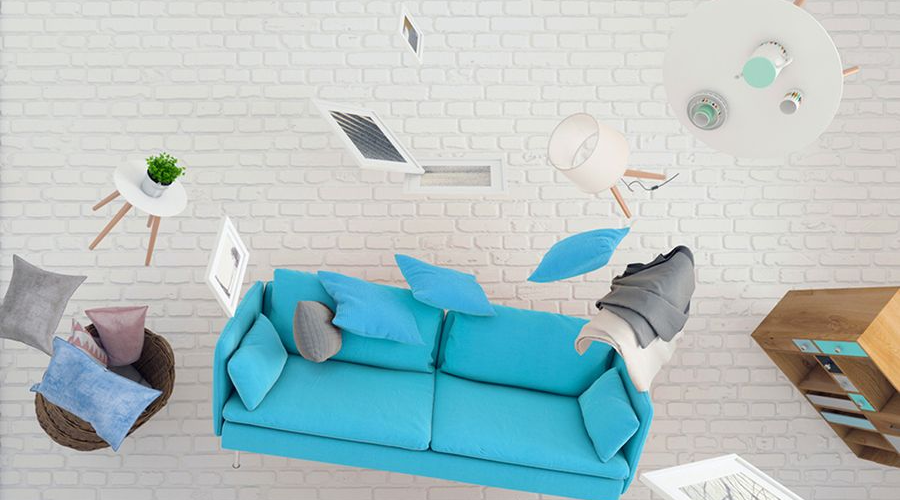1825 Snyder Avenue Charlotte, NC +1 704-676-4089 info@rethinkhomerenos.com

When planning a home design, one common mistake many people make is neglecting to consider the flow and function of the space. It’s essential to look at how different rooms connect and how people will move through the space. For instance, placing furniture in a way that blocks pathways can lead to frustration and discomfort. Additionally, it’s important to think about how each area will be used. A living room meant for socializing should have seating arranged to encourage conversation, while a kitchen needs to be designed for efficiency, ensuring that work areas are easily accessible. Not thinking through these practical aspects can make a home feel cramped or dysfunctional. Moreover, the scale of furniture is crucial; oversized items in a small room can overwhelm the space, while tiny pieces in a larger area can make it feel empty. Taking time to plan the layout not only improves the usability of a home but also enhances its overall aesthetic appeal, creating a welcoming environment for family and guests alike.
Another common mistake in home design is ignoring the importance of adequate lighting. Good lighting can transform a space, highlighting its best features and making it feel more open and inviting. Many people choose only overhead lighting or fail to incorporate multiple light sources, leading to dark corners and an unwelcoming atmosphere. A well-thought-out lighting plan should include ambient, task, and accent lighting to create a balanced, functional environment. For instance, in a kitchen, bright task lighting is essential for cooking, while softer ambient lighting can set the mood for family gatherings. Furthermore, natural light should not be overlooked; large windows or strategically placed mirrors can amplify the brightness of a room and make it feel more expansive. Ignoring these elements can make your home feel dull and uninspired. By designing spaces that make full use of both natural and artificial lighting, you can greatly enhance the overall mood and usability of your home, making it a brighter, more enjoyable place to live.
Color choice is another critical area where many homeowners stumble during the design process. Often, individuals may select colors based on trends rather than considering how they fit their personal style or the function of each room. Bold and trendy colors can certainly make a statement, but if they clash with your existing furnishings or personal taste, they can create a chaotic environment. It's important to choose a palette that not only reflects your personality but also promotes a sense of harmony throughout your home. Lighter colors can make small spaces feel larger and more open, while darker shades can add coziness and sophistication to larger areas. Additionally, consider how colors can affect mood; calming blues and greens may work well in bedrooms where relaxation is key, while lively yellows or reds might be more suitable for energetic spaces like playrooms or kitchens. Failing to thoughtfully consider the colors in your home can lead to a disjointed look that lacks a cohesive feel. By taking the time to choose colors that connect with your style and the purpose of each room, you can create a home that feels unified and inviting.
Space planning is often an area where mistakes can lead to less-than-ideal results in home design. Many individuals might attempt to squeeze in too many pieces of furniture or select oversized items that simply don’t fit well within the dimensions of a room. This can result in a cramped and uninviting atmosphere, where movement feels restricted and spaces serve less of a purpose. It’s essential to measure your spaces carefully before making any purchasing decisions. Utilizing a digital design tool or graph paper can help visualize how different pieces will fit and interact within a space. Additionally, leaving enough space between furniture allows for easier movement and enhances the overall comfort of a room. Creating zones within larger areas can also provide functional clarity; for instance, a large living area can be divided into separate spaces for entertainment and coziness. By giving careful thought to how you layout your home and adhering to a mindful approach toward size and space, you can create a home that is not only beautiful but also functional and livable.
Lastly, many people overlook the significance of storage solutions when designing their homes. Clutter can quickly diminish the appeal of any space and can make it feel chaotic and unorganized. While aesthetics are important, practical elements such as storage should always be taken into account. This means integrating various forms of storage into your design, including built-in shelves, cabinets, and multi-functional furniture that can hide away items when not in use. For example, beds with drawers underneath or ottomans that open for storage can maximize space and minimize mess. Planning for adequate storage early in the design process can prevent the frustration that often comes from a lack of organization down the line. It’s also wise to create designated areas for everyday items so that everything has a place, reducing the likelihood of clutter building up. By giving storage the attention it deserves during the design phase, you can create a serene home environment that balances both style and practicality, making your dwelling a more enjoyable and organized place to live.